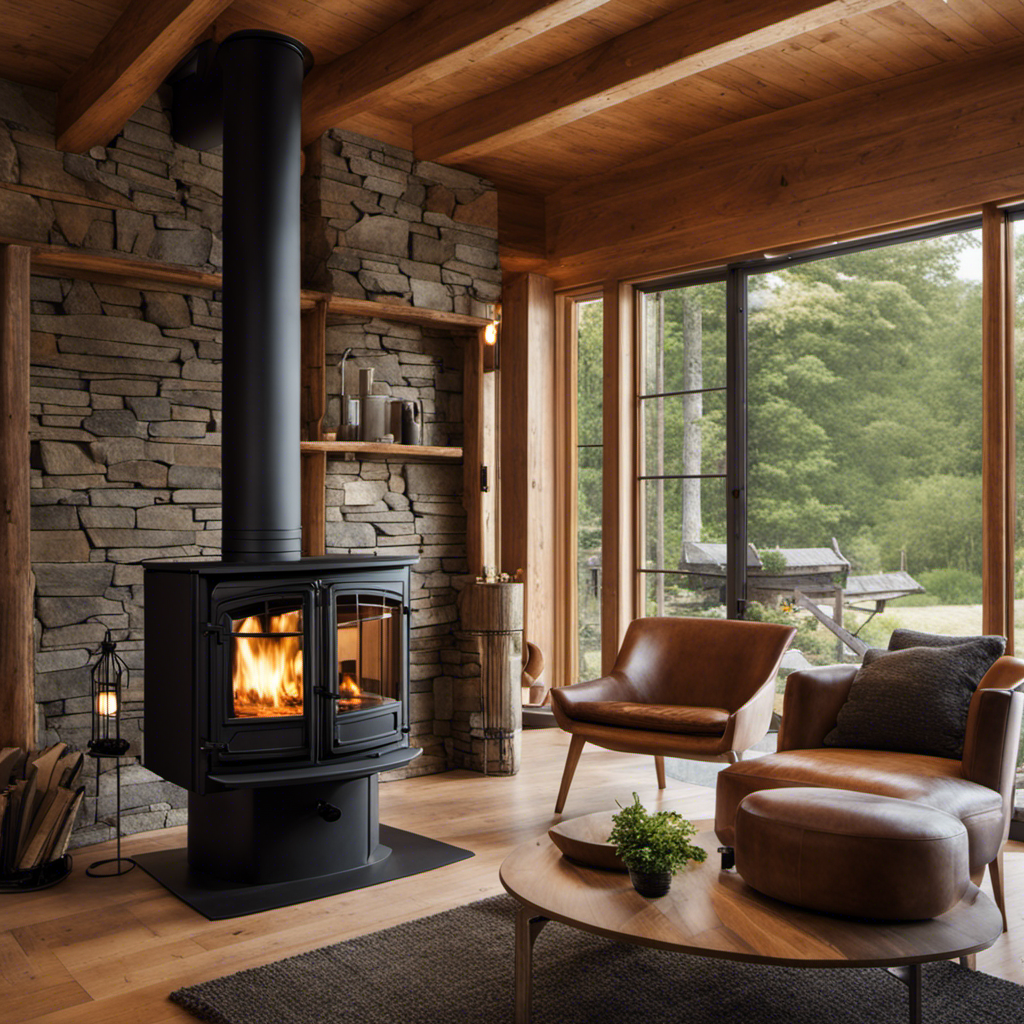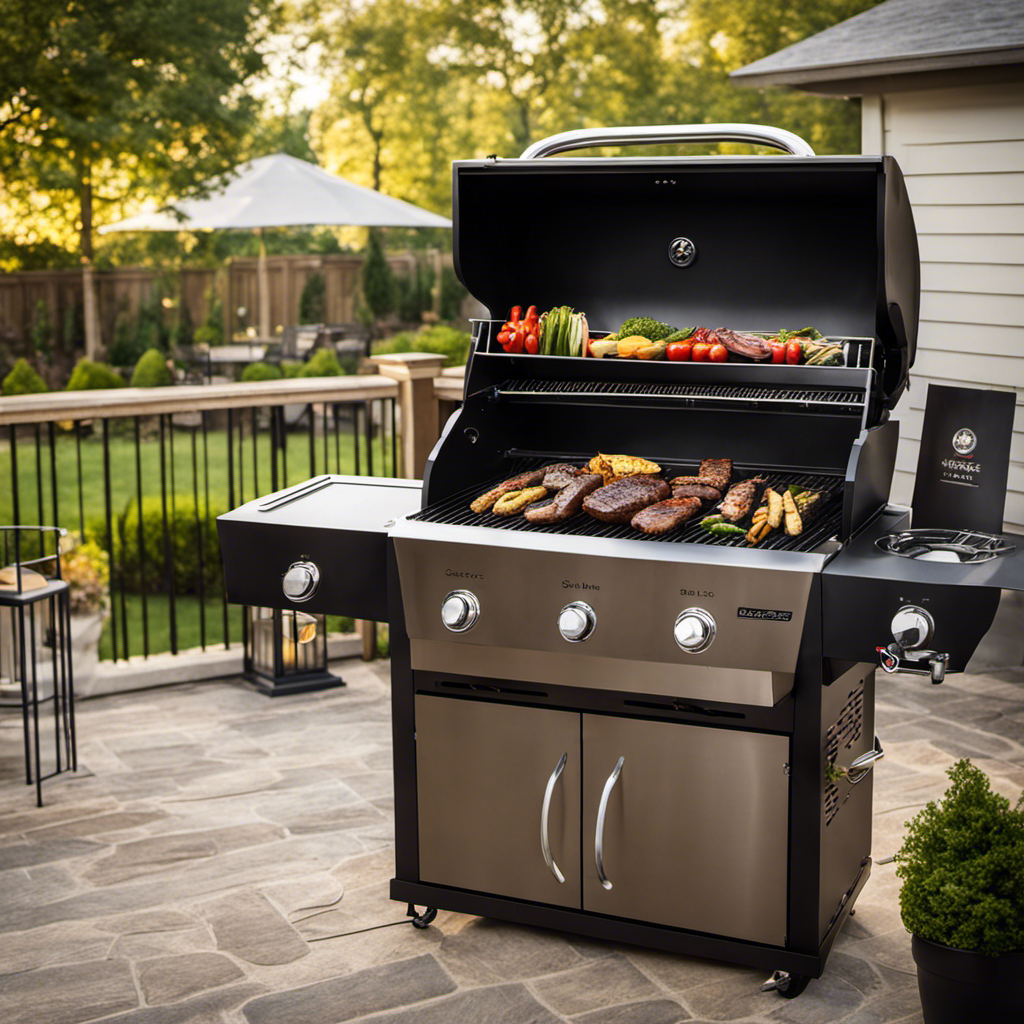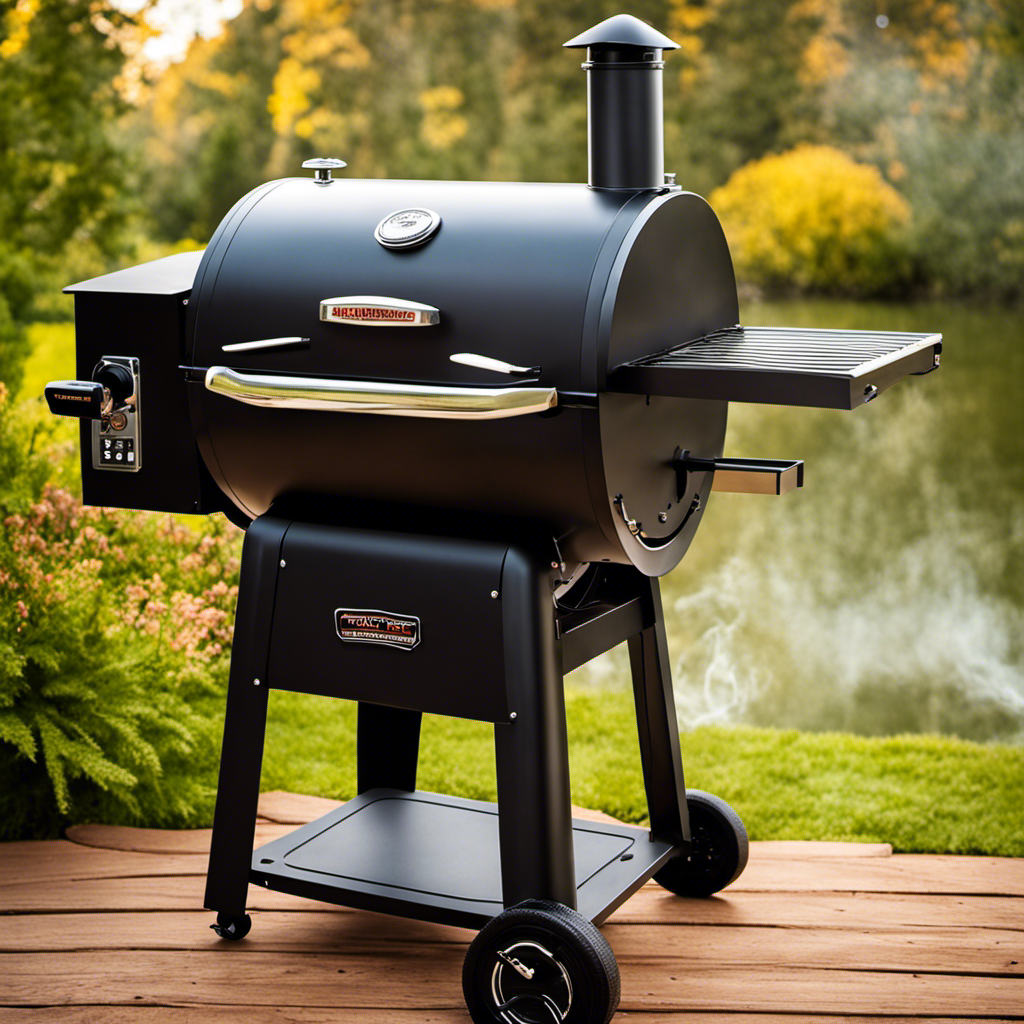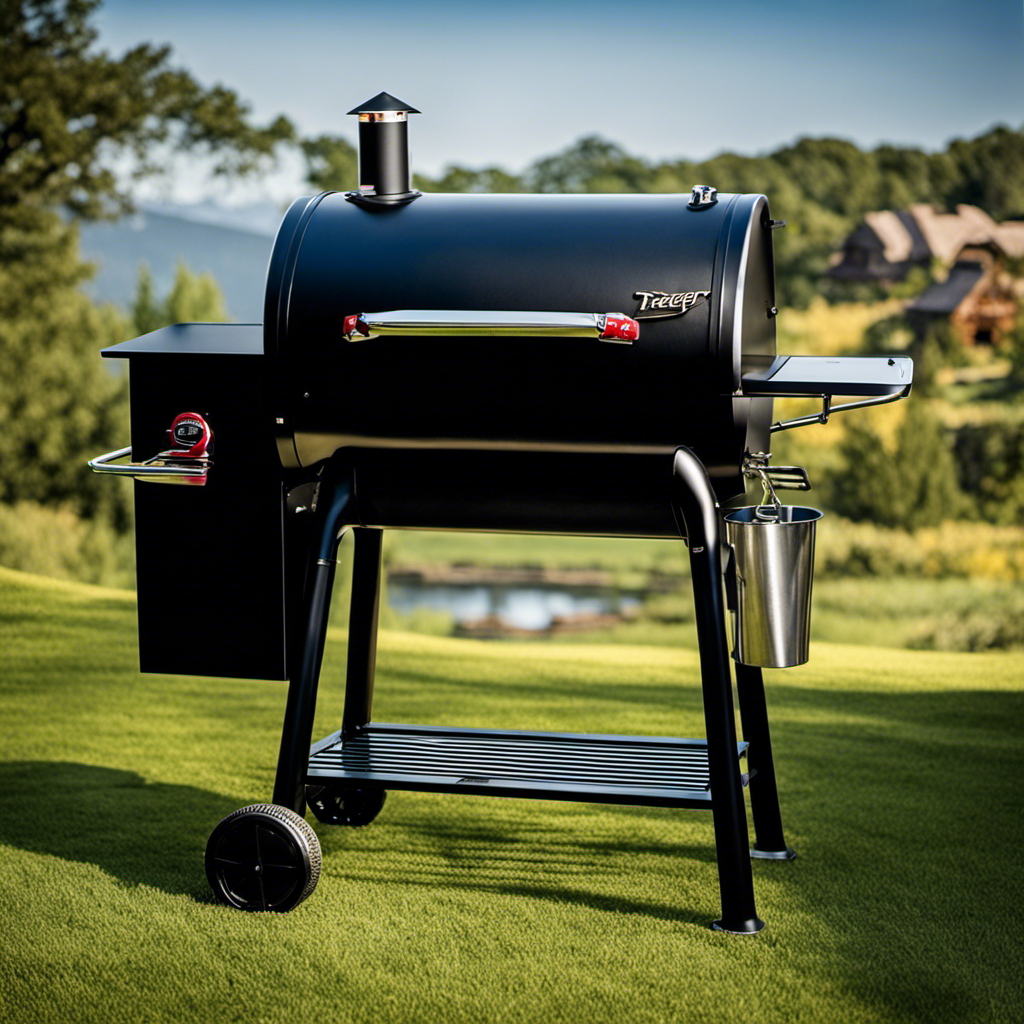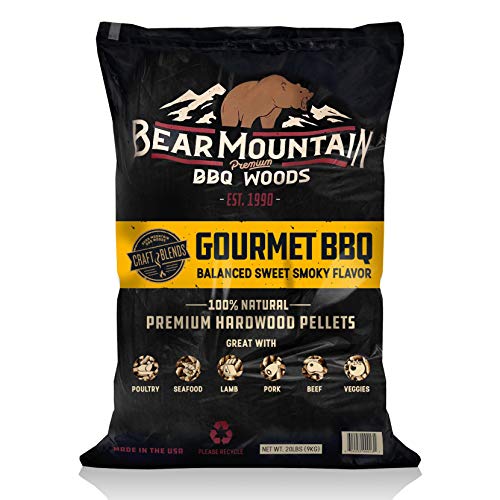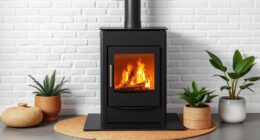As a homeowner who places great importance on energy conservation, I am continually searching for efficient methods to heat my living area. This led me to discover the wood pellet stove, which has greatly impressed me with its ability to save on costs, its environmental benefits, and its proficiency in conserving energy.
Not only does it provide convenience and versatility, but it also adds a touch of rustic charm to any space. Plus, the health benefits and government incentives make this investment even more enticing.
Join me as we explore the reasons why purchasing a wood pellet stove is a wise choice.
Key Takeaways
- Wood pellet stoves save money on heating bills and provide long-term cost savings.
- Wood pellet stoves promote cleaner air quality and reduce carbon emissions.
- Investing in a wood pellet stove qualifies for tax credits and encourages the use of sustainable energy sources.
- Wood pellet stoves are convenient to use, require minimal maintenance, and add a natural and cozy element to the space.
Cost Savings
You’ll save money on heating bills when you buy a wood pellet stove.
Not only is it an efficient and cost-effective way to heat your home, but it also offers several other benefits.
Wood pellets are made from compressed sawdust and other wood waste materials, making them a renewable fuel source. By using wood pellets instead of traditional fossil fuels like oil or gas, you can significantly reduce your carbon footprint and contribute to reduced emissions.
This not only helps the environment but also promotes cleaner air quality both inside and outside your home.
In addition to the environmental benefits, investing in a wood pellet stove can lead to long-term savings on heating expenses, making it a smart choice for both your wallet and the planet.
Environmental Benefits
When considering the environmental benefits, it’s important to note that a wood pellet stove emits fewer pollutants than traditional heating sources. Not only does it provide warmth and comfort, but it also contributes to a cleaner and healthier environment. Here are some reasons why choosing a wood pellet stove is a great decision:
- Renewable energy source: Wood pellets are made from renewable materials such as sawdust and agricultural waste, making them an eco-friendly choice.
- Reduced carbon emissions: Wood pellet stoves produce significantly lower carbon emissions compared to fossil fuel-based heating systems.
- Sustainable forestry practices: The production of wood pellets promotes sustainable forestry practices by utilizing wood residues that would otherwise go to waste.
- Energy efficiency: Wood pellet stoves have high combustion efficiencies, meaning they maximize heat output while minimizing fuel consumption.
- Cost-effective heating solution: Wood pellets are often more affordable than other heating fuels, leading to potential cost savings in the long run.
By switching to a wood pellet stove, you can reduce your carbon footprint while enjoying efficient and economical home heating.
Now let’s explore the next section about energy efficiency.
Energy Efficiency
To maximize energy efficiency, it’s important to properly maintain and clean your wood pellet stove on a regular basis. This not only ensures optimal performance but also helps you achieve significant energy savings.
Wood pellet stoves are known for their sustainable heating capabilities, making them an eco-friendly choice for homeowners. By using compressed wood pellets as fuel, these stoves produce minimal emissions and promote clean air quality in your home.
The high combustion efficiency of wood pellet stoves means that more heat is generated from less fuel, resulting in reduced energy consumption and lower utility bills.
With proper maintenance and cleaning, you can ensure that your wood pellet stove operates at its best, providing reliable and efficient heating throughout the winter months.
Now let’s explore the convenience of owning a wood pellet stove without any interruption in heating comfort.
Convenience
When it comes to convenience, wood pellet stoves are hard to beat. Not only are they easy to use, but they also provide time-saving heating solutions.
With just the flip of a switch or the push of a button, you can instantly warm up your home without any hassle.
Additionally, these stoves require minimal maintenance, making them a hassle-free option for homeowners looking for efficient and convenient heating options.
Easy to Use
The wood pellet stove is so easy to use, it will quickly become your favorite way to heat your home.
Here are four reasons why it’s a great choice:
-
Simple operation: With just a push of a button or turn of a dial, you can start and adjust the warmth in your home.
-
Efficient heating: Wood pellets are highly efficient, providing maximum heat output with minimal waste. You’ll feel cozy and comfortable in no time.
-
Long-lasting performance: These stoves are built to last, with durable construction and high-quality materials that ensure years of reliable heating.
-
Hassle-free maintenance: Cleaning the ash from the stove is a breeze, thanks to easily accessible compartments and removable parts.
With its efficiency benefits and long-lasting performance, the wood pellet stove offers an effortless way to keep your home warm during those chilly winter months.
And now let’s explore how it can also save you valuable time in heating your space…
Time-Saving Heating
Get ready to experience a significant time-saving advantage when heating your home with this efficient and long-lasting option. Wood pellet stoves are designed to provide efficient heating, allowing you to quickly and effectively warm up your living space without wasting precious time.
Unlike traditional wood-burning stoves that require constant monitoring and refueling, wood pellet stoves offer a convenient solution for busy households. With their automatic ignition and programmable thermostats, these stoves can be easily controlled, ensuring that you have a comfortable environment whenever you need it.
Additionally, the use of wood pellets as fuel promotes sustainability and reduces carbon emissions, making it an eco-friendly choice for heating your home. By choosing a wood pellet stove, you’ll not only save time but also contribute towards a greener future.
And the best part? Minimal maintenance is required to keep your wood pellet stove running efficiently.
Minimal Maintenance Required
Maintaining a wood pellet stove requires minimal effort, allowing you to enjoy efficient heating without the hassle. One of the key advantages of owning a wood pellet stove is its time-saving and low maintenance features. Unlike traditional fireplaces or wood-burning stoves, wood pellet stoves require less cleaning and maintenance. The pellets themselves are highly compressed and produce very little ash compared to firewood, which means less time spent cleaning out the stove. Additionally, most modern wood pellet stoves have automatic ignition systems and programmable thermostats, making it easier than ever to control the temperature in your home. With minimal maintenance required, you can spend more time enjoying the cozy warmth of your wood pellet stove instead of worrying about upkeep.
Transitioning into the subsequent section about ‘versatility’, a wood pellet stove offers much more than just efficient heating solutions.
Versatility
You’ll love how versatile a wood pellet stove can be in heating your home and providing a cozy ambiance.
When it comes to heating options, a wood pellet stove offers unparalleled convenience. Unlike traditional fireplaces or wood-burning stoves, which require constant attention and maintenance, a wood pellet stove is easy to operate and requires minimal maintenance.
One of the key advantages of a wood pellet stove is its fuel availability. Wood pellets are widely available and can be purchased at most hardware stores or online. Additionally, they are made from compressed sawdust and other waste materials, making them an eco-friendly choice for heating your home.
The versatility of a wood pellet stove extends beyond just providing warmth; it also adds visual appeal to any space with its charming flame patterns and rustic aesthetic.
Aesthetics
The rustic aesthetic and charming flame patterns of a wood pellet stove can enhance the overall aesthetics of any space. When it comes to interior design, incorporating a wood pellet stove can create a warm and inviting ambience that instantly transforms the room. Here are some reasons why a wood pellet stove is an excellent addition to your home:
- Adds a natural and cozy element
- Creates a focal point in the room
- Enhances the overall ambiance with its flickering flames
- Provides a rustic charm that complements various decor styles
- Gives off a comforting warmth that makes the space feel inviting
In addition to improving the visual appeal of your home, installing a wood pellet stove also brings numerous health benefits into your living environment.
Health Benefits
Installing a wood pellet stove can improve indoor air quality by reducing the amount of pollutants and allergens in your home. As someone who values clean air and respiratory health, investing in a wood pellet stove is a wise decision.
Traditional heating methods like gas or oil furnaces release harmful emissions that can worsen air quality and trigger respiratory issues. However, wood pellet stoves burn compressed sawdust pellets, which produce fewer pollutants and allergens. These stoves are designed to efficiently burn the pellets, minimizing smoke and soot production.
With improved air quality, you can breathe easier and reduce the risk of respiratory problems for you and your family.
Now let’s explore how government incentives can make this investment even more appealing.
Government Incentives
If you’re interested in saving money on your energy bills and reducing your environmental impact, government incentives for wood pellet stoves can provide significant financial benefits.
Wood pellet stoves are a renewable energy source that burns compressed wood pellets to generate heat. By replacing traditional heating systems with these efficient stoves, you can qualify for tax credits offered by the government.
These tax credits allow you to deduct a portion of the cost of purchasing and installing a wood pellet stove from your taxes. Not only will this help reduce your upfront expenses, but it will also contribute towards a greener future by encouraging the use of clean and sustainable energy sources.
Take advantage of these government incentives today, and start enjoying the warmth and comfort provided by a wood pellet stove while saving money and reducing your carbon footprint.
Frequently Asked Questions
Are Wood Pellet Stoves Suitable for All Types of Homes?
Wood pellet stoves are suitable for all types of homes due to their cost efficiency and minimal environmental impact. They offer a sustainable heating solution that reduces reliance on fossil fuels and can help lower energy bills.
How Do Wood Pellet Stoves Compare in Terms of Heating Capacity to Traditional Heating Systems?
Compared to traditional heating systems, wood pellet stoves offer impressive heating capacity. They are highly efficient, providing a cozy warmth while reducing energy costs. It’s no wonder they’re becoming a popular choice for homeowners.
Can I Use Wood Pellets From Different Brands in My Wood Pellet Stove?
Using different brands of wood pellets in a wood pellet stove can have pros and cons. While it allows for more options and availability, it’s important to consider the quality and compatibility of the pellets for optimal performance.
What Maintenance Is Required for a Wood Pellet Stove?
Wood pellet stove maintenance is essential to ensure optimal performance and longevity. Regular cleaning of the burn pot, heat exchanger, and chimney is necessary. The benefits of wood pellet stoves include cost savings and eco-friendliness.
How Noisy Are Wood Pellet Stoves When in Operation?
Quiet as a whisper, wood pellet stoves purr gently in the background, hardly noticeable. Their low noise levels ensure a peaceful and comfortable user experience, making them an excellent choice for those seeking tranquility.
Conclusion
In conclusion, purchasing a wood pellet stove is a decision that offers both immediate and long-term benefits. Not only will it save you money on heating costs, but it also reduces your carbon footprint and contributes to a cleaner environment.
With its high energy efficiency and convenient operation, this versatile appliance adds charm to any space while providing warmth. Moreover, the health benefits associated with using wood pellets are undeniable.
So why not take advantage of government incentives and bring home the cozy embrace of a wood pellet stove today? It’s like having a loyal companion by your side, always ready to provide comfort in the most sustainable way possible.

